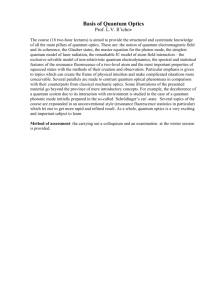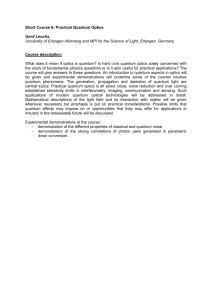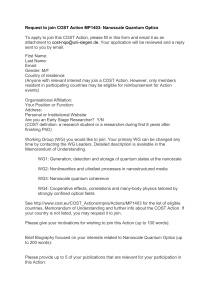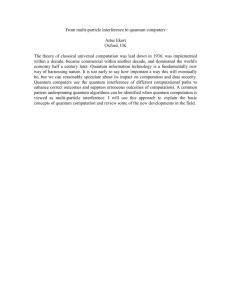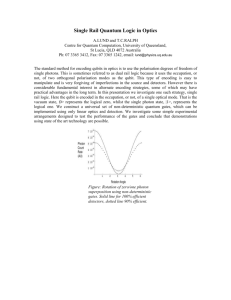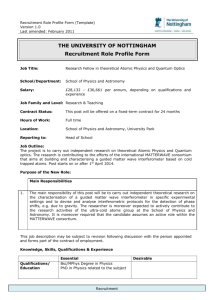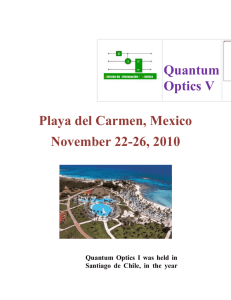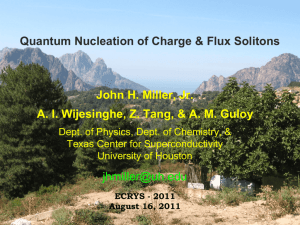Open Access proceedings Journal of Physics: Conference
advertisement
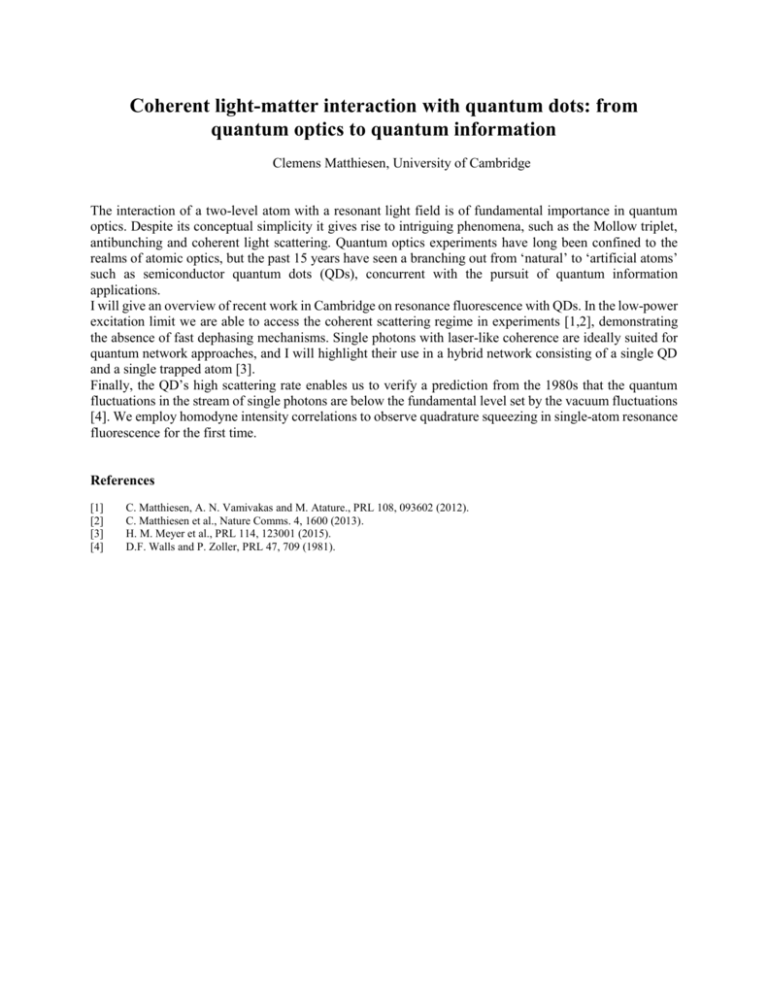
Coherent light-matter interaction with quantum dots: from quantum optics to quantum information Clemens Matthiesen, University of Cambridge The interaction of a two-level atom with a resonant light field is of fundamental importance in quantum optics. Despite its conceptual simplicity it gives rise to intriguing phenomena, such as the Mollow triplet, antibunching and coherent light scattering. Quantum optics experiments have long been confined to the realms of atomic optics, but the past 15 years have seen a branching out from ‘natural’ to ‘artificial atoms’ such as semiconductor quantum dots (QDs), concurrent with the pursuit of quantum information applications. I will give an overview of recent work in Cambridge on resonance fluorescence with QDs. In the low-power excitation limit we are able to access the coherent scattering regime in experiments [1,2], demonstrating the absence of fast dephasing mechanisms. Single photons with laser-like coherence are ideally suited for quantum network approaches, and I will highlight their use in a hybrid network consisting of a single QD and a single trapped atom [3]. Finally, the QD’s high scattering rate enables us to verify a prediction from the 1980s that the quantum fluctuations in the stream of single photons are below the fundamental level set by the vacuum fluctuations [4]. We employ homodyne intensity correlations to observe quadrature squeezing in single-atom resonance fluorescence for the first time. References [1] [2] [3] [4] C. Matthiesen, A. N. Vamivakas and M. Atature., PRL 108, 093602 (2012). C. Matthiesen et al., Nature Comms. 4, 1600 (2013). H. M. Meyer et al., PRL 114, 123001 (2015). D.F. Walls and P. Zoller, PRL 47, 709 (1981).


